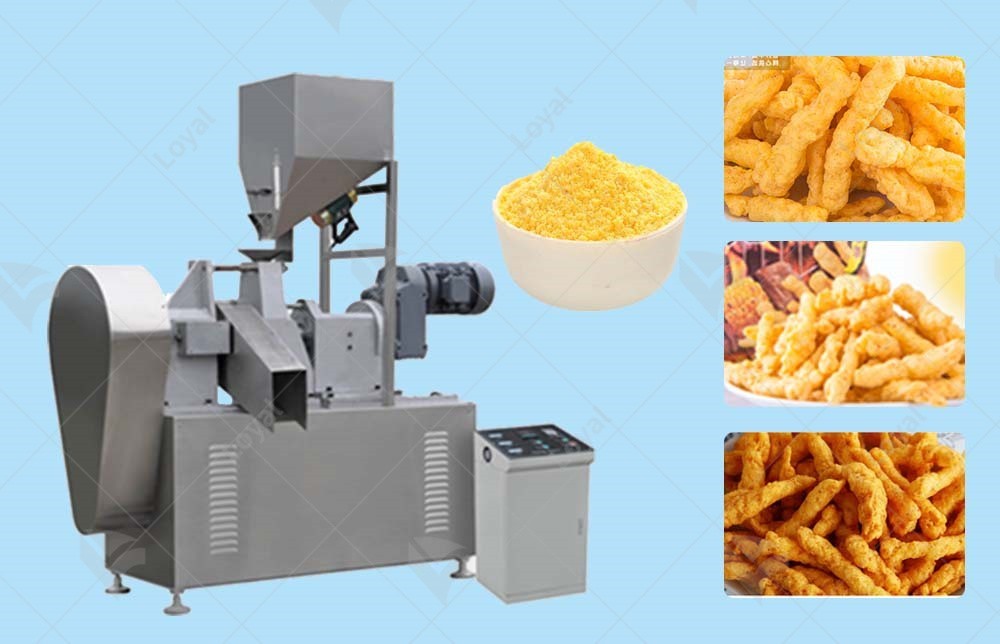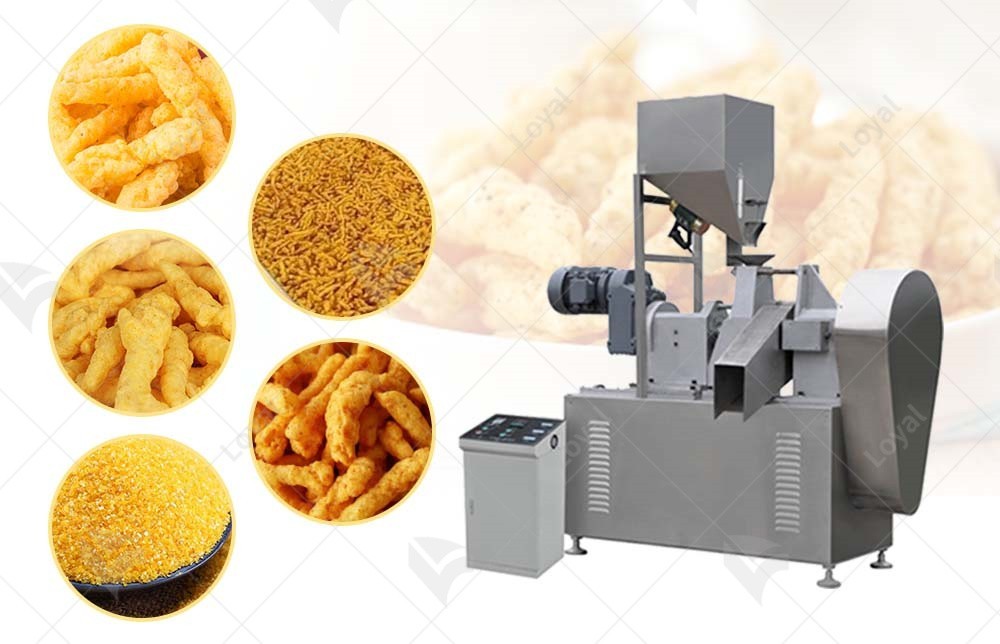Discover The Secret To Perfect small kurkure machine: small kurkure machine Recipes
Importance of Small-Scale Snack Machines
In the realm of food production, advancements in technology have led to the emergence of various types of machinery that cater to different needs within the industry. Among these, small-scale snack machines have gained significant prominence, particularly in the context of snack production. The small Kurkure machine, in particular, stands out as a testament to the importance of small-scale snack machines in modern food manufacturing.
Small-scale snack machines are vital for several reasons. Firstly, they offer a cost-effective solution for businesses looking to venture into the snack production industry. Unlike large-scale industrial machines, small-scale snack machines require less capital investment, making them accessible to entrepreneurs with limited resources. This accessibility is crucial in fostering innovation and competition within the snack market.
Moreover, small-scale snack machines provide flexibility in terms of production capacity. They allow businesses to start small and gradually scale up their operations as demand grows. This scalability is particularly beneficial for startups and small businesses that may not have the financial stability to commit to large-scale production from the outset.
Additionally, small-scale snack machines contribute to the diversification of snack options available in the market. With their ability to produce a variety of snacks, these machines enable businesses to cater to the diverse tastes and preferences of consumers. This diversification not only enhances consumer satisfaction but also drives sales and revenue growth for snack producers.
In the case of the small Kurkure machine, its compact design and user-friendly operation make it an ideal choice for small-scale snack production. The machine is capable of producing Kurkure-style snacks, which are popular among consumers for their crunchy texture and delicious flavor. With its high production efficiency and low operational costs, the small Kurkure machine represents a significant advancement in small-scale snack production technology.
In conclusion, small-scale snack machines, including the small Kurkure machine, play a crucial role in the snack production industry. Their cost-effectiveness, scalability, and ability to diversify snack options make them an essential addition to any food manufacturing business looking to capitalize on the growing demand for snacks. As technology continues to evolve, small-scale snack machines will undoubtedly play an increasingly important role in shaping the future of the snack production industry.

Technical Specifications and Features of the Small Kurkure Machine
The small Kurkure machine is a sophisticated piece of equipment that combines advanced technology with user-friendly features, making it an ideal choice for snack producers looking to create high-quality extruded snacks on a smaller scale. Here are the technical specifications and key features of this innovative machine:
- Technical Specifications
|
Capacity |
The small Kurkure machine is designed with varying capacities to suit different production needs. Typical capacities range from 100-150 kg/h, making it suitable for small-scale production. |
|
Voltage |
The machine operates on a standard voltage of 380V/50Hz or 220V/50Hz, ensuring compatibility with most electrical systems worldwide. Custom voltage options may also be available upon request. |
|
Materials |
Constructed from food-grade stainless steel, the machine ensures hygiene and durability, meeting the highest standards in food production. |
|
Dimensions |
With compact dimensions (typically around 1800*800*2400 mm), the small Kurkure machine is designed to fit into smaller production spaces without compromising on functionality. |
- Key Features
|
Fully Automatic Operation |
The machine integrates multiple processes into a seamless, one-pass operation, including mixing, extruding, shaping, cutting, frying or baking, cooling, and seasoning. This automation simplifies production and reduces labor costs. |
|
Flexible Raw Material Options |
The small Kurkure machine can accommodate a wide range of raw materials, including corn grits, making it versatile for producing different types of extruded snacks. |
|
Advanced Extrusion Technology |
Utilizing a unique extrusion process, the machine moistens the raw materials in a flour mixer and feeds them into a rotary head extruder. Inside the extruder, the raw materials are transformed into the desired shapes and sizes by the rotary plates and cutting knives. |
|
Temperature Control System |
The machine features a visible auto-temperature controlling system that allows for precise temperature regulation during production. This ensures consistent product quality and enhances the overall taste and texture of the snacks. |
|
Efficient Cooling and Seasoning |
After extrusion and frying or baking, the snacks are cooled to the optimal temperature before being seasoned with a variety of flavors. This ensures that the snacks retain their crunchiness and delicious taste. |
|
Easy Maintenance and Cleaning |
Designed with ease of maintenance and cleaning in mind, the small Kurkure machine features accessible components and a robust construction that withstands frequent use and cleaning. |
|
Customizable Options |
The machine can be customized to meet specific production needs, including adjustments to capacity, voltage, and raw material options. Additionally, after-sales service and technical support are provided to ensure smooth operation and ongoing performance. |
In conclusion, the small Kurkure machine combines advanced technology, user-friendly features, and high-quality materials to provide snack producers with an efficient and versatile solution for small-scale production. Its compact design, fully automatic operation, and customizable options make it an ideal choice for businesses looking to capitalize on the growing demand for Kurkure-style snacks.

Detailed Description and Benefits of Using the Components of a Small Kurkure Machine
Components of a Small Kurkure Machine
The small Kurkure machine is a specialized snack-making device designed to produce light, crispy, and flavorful snacks akin to Kurkure, a popular brand in India. Here's a detailed look at its key components and their respective benefits:
1.Feed Hopper:
Description: This component serves as the entry point for raw materials like flour, cornmeal, and seasonings. It is typically designed with a large capacity to accommodate bulk raw materials.
Benefits: Ensures a steady supply of raw materials to the machine, minimizing downtime and enhancing production efficiency.
2.Mixer:
Description: The mixer blends the raw materials with water or other liquid ingredients to form a dough-like consistency. It may include blades or paddles to facilitate mixing.
Benefits: Ensures uniform distribution of ingredients, leading to consistent texture and taste in the final product.
3.Extruder:
Description: The extruder is the core component that shapes the dough into the desired snack form. It operates under high pressure to force the dough through a die with the desired shape and size holes.
Benefits: Provides precise control over snack shape, size, and texture, allowing for customization to meet consumer preferences.
4.Fryer/Oven:
Description: This component cooks the extruded snacks to achieve the desired crispiness and color. It may use hot air, oil, or a combination of both.
Benefits: Ensures snacks are cooked evenly and consistently, enhancing their appeal and taste.
5.Conveyor Belt:
Description: The conveyor belt transports the snacks from one processing stage to another, such as from the extruder to the fryer or from the fryer to the cooling station.
Benefits: Automates the production process, reducing labor costs and increasing efficiency.
6.Cooling and Seasoning Stations:
Description: After cooking, snacks are cooled to prevent them from becoming soggy and are then seasoned with desired flavors and spices.
Benefits: Ensures snacks maintain their crispiness and adds the final touch of flavor, enhancing overall consumer satisfaction.
7.Packaging Machine (Optional):
Description: This component automatically packages the cooled and seasoned snacks in individual serving sizes or larger bags.
Benefits: Streamlines the production process, reduces handling time, and enhances product presentation for retail sale.
Benefits of Using the Components of a Small Kurkure Machine
1.Increased Production Efficiency:
Automated processes reduce manual labor and production time, allowing for higher output with fewer resources.
2.Consistency in Product Quality:
Precision in shaping, cooking, and seasoning ensures that each batch of snacks meets high quality standards, enhancing consumer trust and loyalty.
3.Customization and Flexibility:
The modular design allows for easy adjustments to component settings, enabling manufacturers to create a variety of snack shapes, sizes, and flavors to meet diverse market demands.
4.Cost-Effective:
Automated production reduces waste and labor costs, making the small Kurkure machine a cost-effective investment for snack manufacturers.
5.Scalability:
Components can be scaled up or down to match production needs, allowing manufacturers to grow their business without the need for significant equipment upgrades.
In conclusion, the components of a small Kurkure machine offer numerous benefits, from increased production efficiency and consistency in product quality to customization, cost-effectiveness, and scalability. These advantages make the small Kurkure machine an ideal choice for snack manufacturers looking to expand their product offerings and meet the demands of a diverse consumer base.

Challenges and Limitations of Using the Small Kurkure Machine
In the realm of snack production, the small Kurkure machine has emerged as a notable innovation, particularly for small-scale and startup food entrepreneurs. However, despite its compact size and potential for cost-effectiveness, this machinery is not devoid of challenges and limitations. This section delves into the primary hurdles faced when utilizing the small Kurkure machine in snack production.
1. Production Capacity and Efficiency
One of the most prominent challenges associated with the small Kurkure machine is its limited production capacity. Unlike industrial-scale machinery, which is designed for mass production, the small Kurkure machine is suited for smaller batches. This can be a significant limitation for businesses aiming to expand their market reach or meet high demand. The efficiency of the machine, in terms of output per unit time, may also be lower compared to larger models, necessitating longer production cycles or the use of multiple machines to maintain desired production levels.
2. Technical Expertise and Operator Skill
Operating the small Kurkure machine requires a certain level of technical expertise and skill. While the machinery is designed to be user-friendly, inexperienced operators may struggle with settings, maintenance, and troubleshooting. Incorrect operation can lead to product quality issues, machine malfunctions, and even safety hazards. Therefore, investing in training for operators or hiring personnel with relevant experience is crucial for ensuring optimal performance and product quality.
3. Maintenance and Parts Availability
Regular maintenance is essential for the longevity and performance of any machinery, and the small Kurkure machine is no exception. However, maintaining this machinery can be challenging due to the specialized nature of its components. Parts may not be as readily available as those for more common industrial equipment, leading to potential downtime and production delays. Additionally, the cost of maintenance and repairs can accumulate over time, impacting the overall cost-effectiveness of the machine.
4. Product Diversification and Customization
The small Kurkure machine may limit the ability to diversify and customize snack products. While it is capable of producing a range of snacks, the specific shapes, sizes, and flavors may be constrained by the machinery's design and capabilities. This can be a disadvantage in a market where consumers demand variety and customization. To overcome this limitation, businesses may need to invest in additional equipment or explore alternative production methods.
5. Market Adaptability and Scalability
As businesses grow and market demands evolve, the small Kurkure machine may not offer the flexibility required to adapt quickly. Scaling up production may necessitate the purchase of additional machinery or transitioning to larger-scale equipment, which can be a costly and time-consuming process. Moreover, the machine's design and capabilities may not align with emerging market trends or consumer preferences, requiring businesses to be proactive in their product development and marketing strategies.
In conclusion, while the small Kurkure machine presents an attractive option for small-scale snack production, it is not without its challenges and limitations. Businesses considering this machinery should carefully assess their production needs, operator skills, maintenance capabilities, and market position to ensure that the machine is the right fit for their operations. By understanding and addressing these challenges, businesses can harness the potential of the small Kurkure machine to create innovative and high-quality snacks that meet consumer demands.

Reference
The following are five authoritative foreign literature websites in the field of Industrial food machinery:
1. Food Engineering Magazine
Website: https://www.foodengineeringmag.com/
2.Food Processing Magazine
Website: https://www.foodprocessing.com/
3.Journal of Food Engineering
Website:https://www.journals.elsevier.com/journal-of-food-engineering
4. Food Manufacturing Magazine
Website:https://www.foodmanufacturing.com/
5. International Journal of Food Science & Technology
Website:https://onlinelibrary.wiley.com/